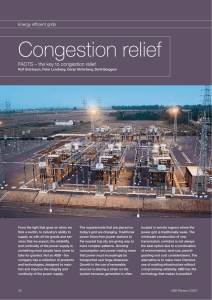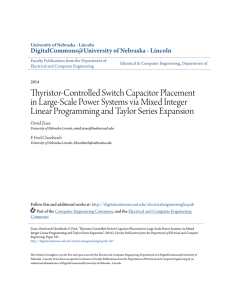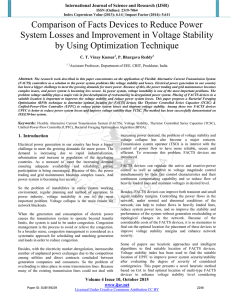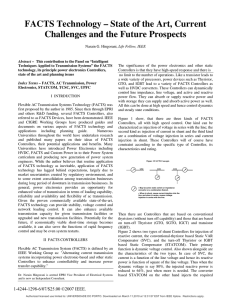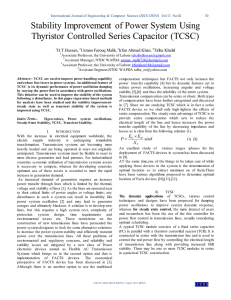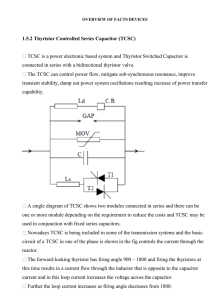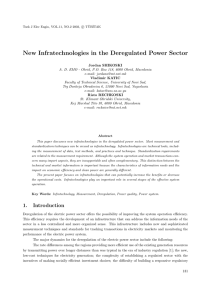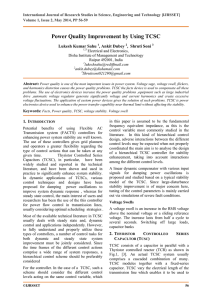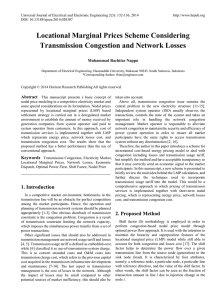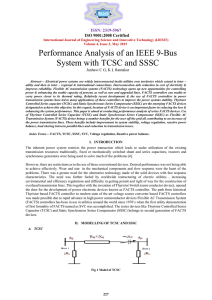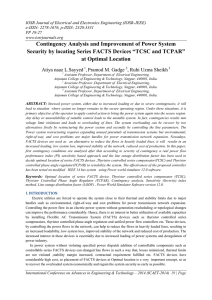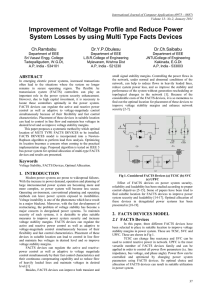PDF (References)
advertisement
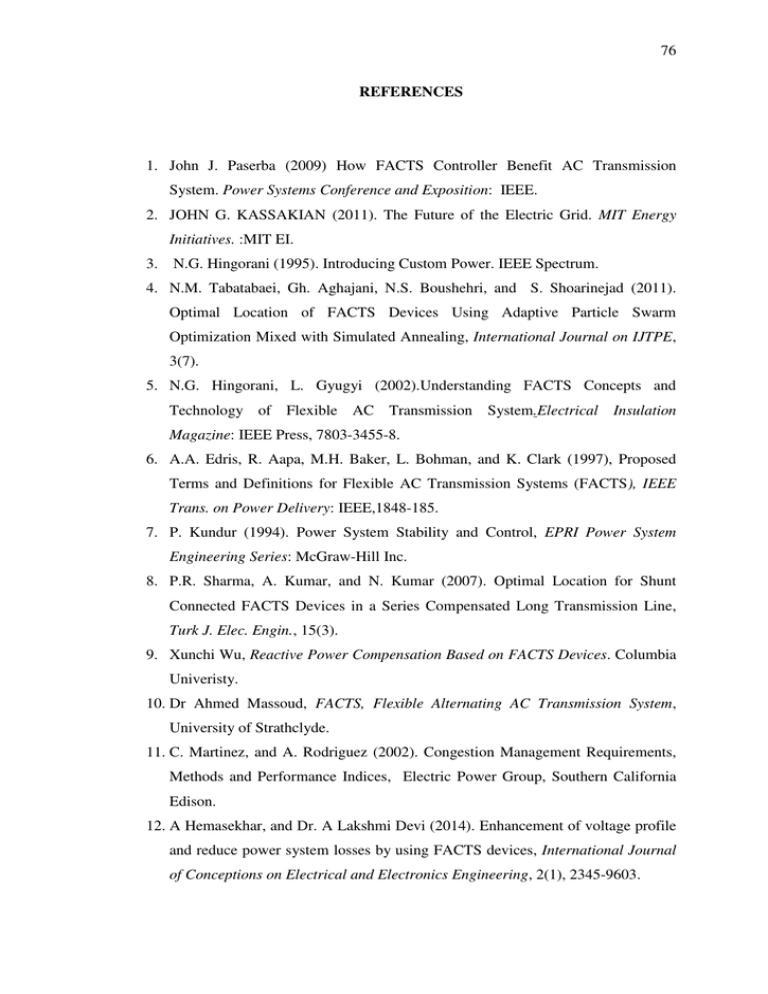
76 REFERENCES 1. John J. Paserba (2009) How FACTS Controller Benefit AC Transmission System. Power Systems Conference and Exposition: IEEE. 2. JOHN G. KASSAKIAN (2011). The Future of the Electric Grid. MIT Energy Initiatives. :MIT EI. 3. N.G. Hingorani (1995). Introducing Custom Power. IEEE Spectrum. 4. N.M. Tabatabaei, Gh. Aghajani, N.S. Boushehri, and S. Shoarinejad (2011). Optimal Location of FACTS Devices Using Adaptive Particle Swarm Optimization Mixed with Simulated Annealing, International Journal on IJTPE, 3(7). 5. N.G. Hingorani, L. Gyugyi (2002).Understanding FACTS Concepts and Technology of Flexible AC Transmission System.Electrical Insulation Magazine: IEEE Press, 7803-3455-8. 6. A.A. Edris, R. Aapa, M.H. Baker, L. Bohman, and K. Clark (1997), Proposed Terms and Definitions for Flexible AC Transmission Systems (FACTS), IEEE Trans. on Power Delivery: IEEE,1848-185. 7. P. Kundur (1994). Power System Stability and Control, EPRI Power System Engineering Series: McGraw-Hill Inc. 8. P.R. Sharma, A. Kumar, and N. Kumar (2007). Optimal Location for Shunt Connected FACTS Devices in a Series Compensated Long Transmission Line, Turk J. Elec. Engin., 15(3). 9. Xunchi Wu, Reactive Power Compensation Based on FACTS Devices. Columbia Univeristy. 10. Dr Ahmed Massoud, FACTS, Flexible Alternating AC Transmission System, University of Strathclyde. 11. C. Martinez, and A. Rodriguez (2002). Congestion Management Requirements, Methods and Performance Indices, Electric Power Group, Southern California Edison. 12. A Hemasekhar, and Dr. A Lakshmi Devi (2014). Enhancement of voltage profile and reduce power system losses by using FACTS devices, International Journal of Conceptions on Electrical and Electronics Engineering, 2(1), 2345-9603. 77 13. F.D. Galiana, K. Almeida, M. Toussaint, J. Griffin, and D. Atanackovic (1996), Assessment and Control of the Impact of FACTS Devices on Power System Performance, IEEE Trans. Power Systems, 11(4). 14. Madhura Gad, Prachi Shinde, and Prof. S.U.Kulkarni (2012). Optimal Location of TCSC by Sensitivity Methods, International Journal Of Computational Engineering Research, 2(6), 15. Abouzar Samimi, and Peyman Naderi (2012). A New Method for Optimal Placement of TCSC Based on Sensitivity Analysis for Congestion Management. Smart Grid and Renewable Energy, 3, 10-16. 16. Renu Yadav, Sarika Varshney, and Laxmi Srivastava (2011). Enhancement of Voltage Stability through Optimal Placement of TCSC, International Journal of Power System Operation and Energy Management, 1(2), 2231–4407. 17. Anwar S. Siddiqui, Rashmi Jain, Majid Jamil and Gupta C. P. (2011). Congestion Management in High Voltage Transmission Line using Thyrister Controlled Series Capacitors, Journal of Electrical and Electronics Engineering Research, 3(8), 2141- 2367. Academic Journals. 18. Naresh Acharya, N. Mithulananthan (2006).Locating series FACTS devices for congestion management in deregulated electricity markets. Electric Power Systems Researc: ScienceDirect, 352–360. 19. Seyed Abbas Taher, and Hadi Besharat, (2008). Transmission Congestion Management by Determining Optimal Location of FACTS Devices in Deregulated Power Systems. American Journal of Applied Science, 5(3), 242247. American Journal. 20. L.Rajalakshmi, M.V.Suganyadevi, and S.Parameswari (2011). Congestion Management in Deregulated Power System by Locating Series FACTS Devices. International Journal of Computer Applications, 13(8), 0975-8887. 21. A.Yazdanpanah-Goharrizi and R.Asghari (2007). A Novel Line Stability Index (NLSI) for Voltage Stability Assessment OF Power Systems, 7th WSEAS International Conference on Power Systems, September 15-17, Beijing, China.
